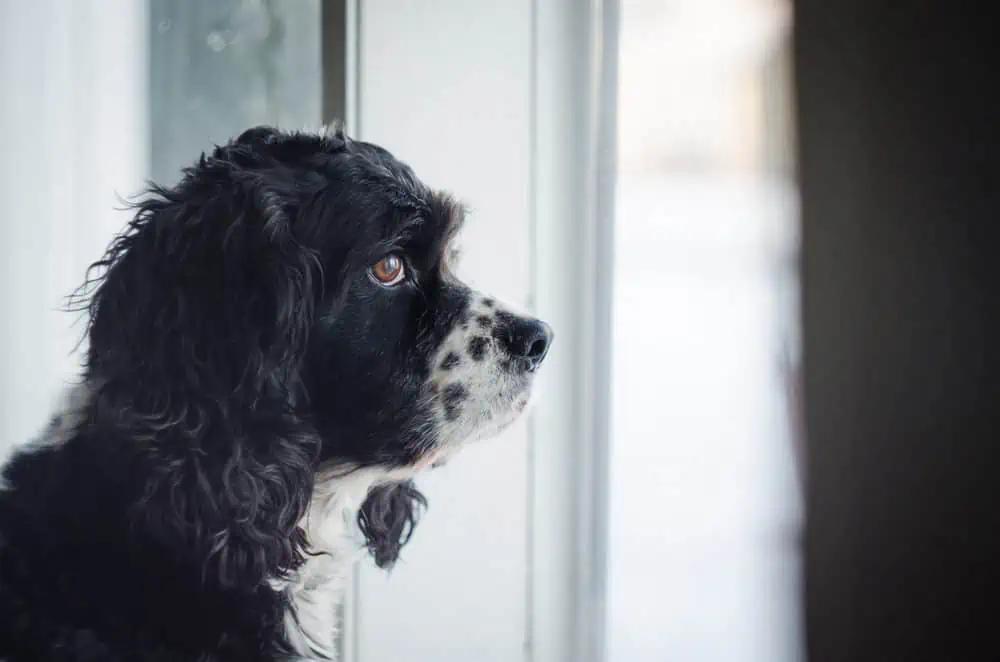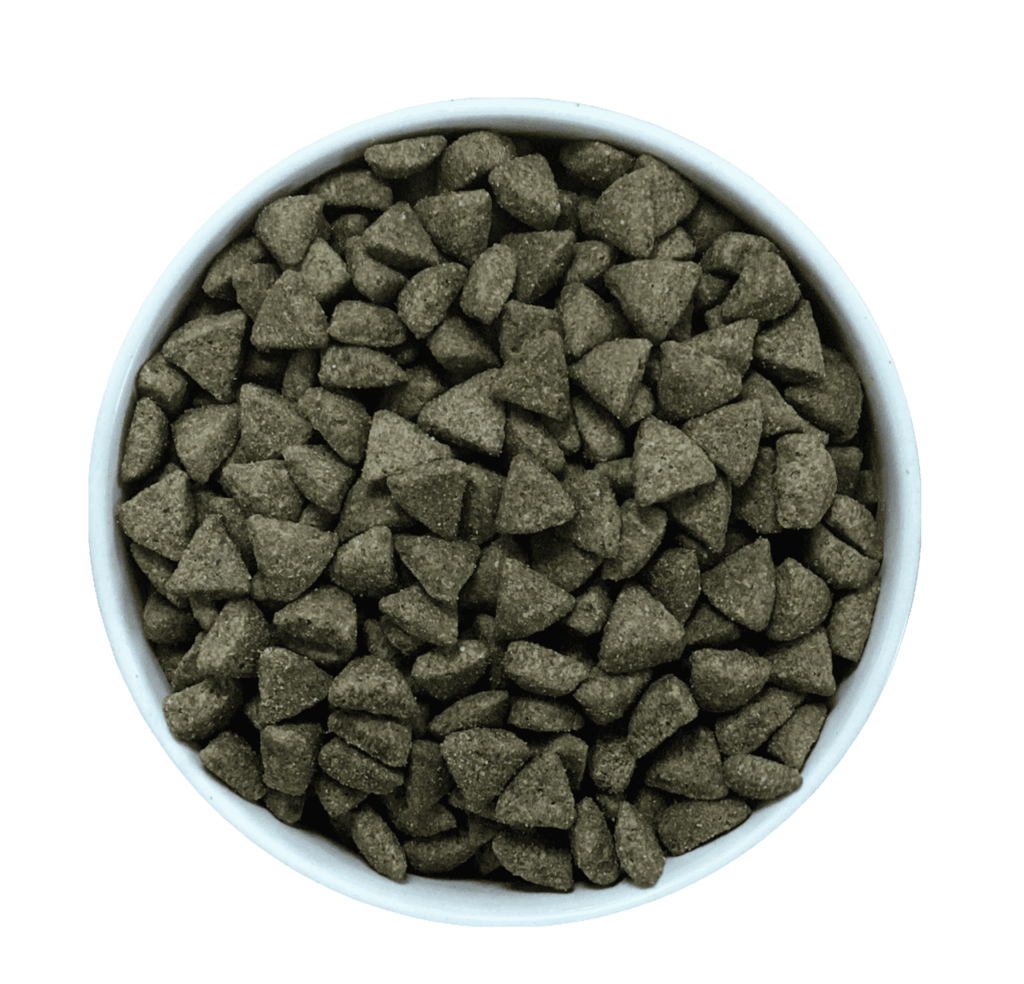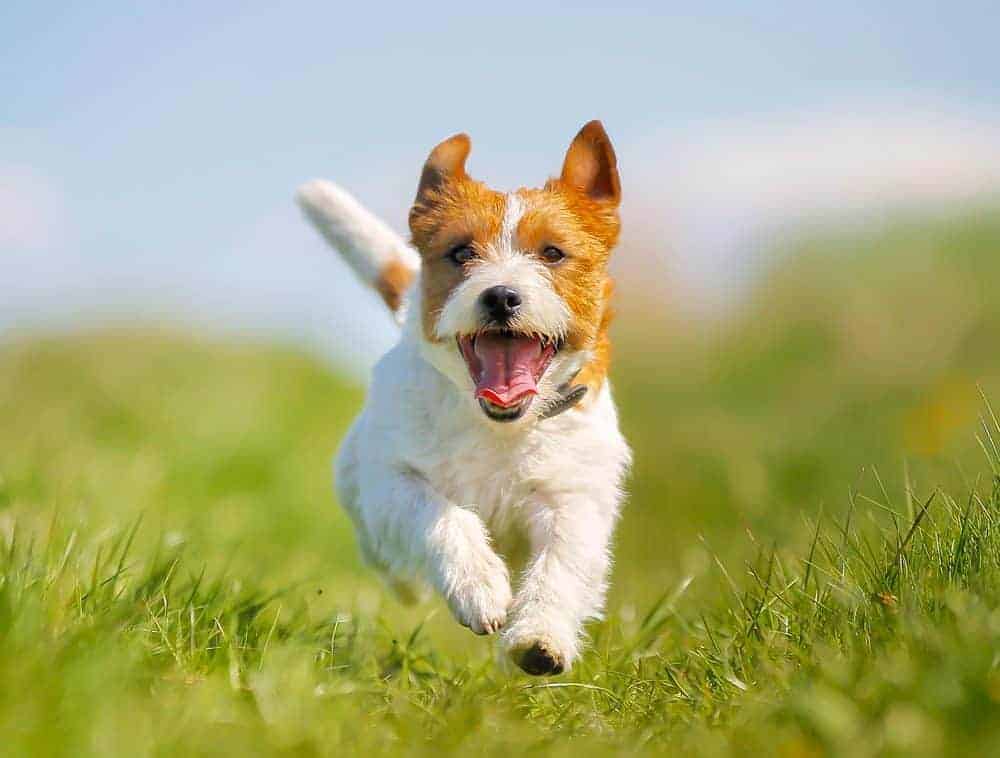
How do you tell if your pets are overweight? What’s the best food to choose to help your pets slim down? How can you encourage your pets to be more active? If you’re in need of some motivation to help your pets reach those New Year health and fitness goals, check out our TOP 5 DO’s and DON’Ts, which provide expert tips and advice to help your pets get in shape...
How many of us make a New Year’s resolution to take more exercise, get fitter and shed those Covid/Christmas combo pounds? We may start out with good intentions, but it’s all too easy to give up. However, if you team up with your pet as a motivation buddy – with both of you watching what you eat and being more active – it can keep you both on track. What’s more, making a commitment to getting in shape is just as important for our pets as it is for us.
A weighty issue
According to PDSA’s annual Animal Wellbeing (PAW) Report, In 2020, 78% of veterinary professionals said that they had seen an increase in pet obesity over the last two years. Obesity has remained a top concern of veterinary professionals since data was collected for the first PAW Report in 2011, consistently being chosen as one of the top five welfare issues facing dogs, cats, and rabbits in the UK. Despite this, in 2020, only 14% of dog owners, 18% of cat owners and 10% of rabbit owners reported their pet to be overweight or obese.
In a recent survey carried out by Burgess Pet Care and veterinary scales manufacturer Marsden, in which more than 1,000 pet owners took part, almost a third (32%) said that their pet was either slightly overweight or overweight, with nearly a quarter (24%) admitting that they have given their pets more treats during lockdown.
However, the good news for the UK’s pets is that, according to the survey, owners understand the importance of helping their pets maintain a healthy weight:
- 88% stated that their pet/s weight is very important to help them lead a happy life
- 89% said that if their pet/s could be protected from certain illnesses by losing weight, they would actively work with their vet to help them to slim down by carefully measuring and monitoring their food intake and increasing their exercise
How to tell if your pet is overweight
In general, dogs who are at a healthy weight have an ‘hourglass’ figure when looked down upon from above. The abdomen should be narrower than the chest and hips and they should look ‘tucked up’, which means that a dog’s chest is closer to the ground than the belly when he or she is standing. Ribs should not be readily visible but are easily felt with light pressure. The Pet Food Manufacturers’ Association (PFMA) has a handy Dog Size-O-Meter, which you can check out here >>
When it comes to cats, Cats Protection advises that “Overweight cats are usually defined as being more than 15% over their ideal weight and obese cats are more than 30% over their ideal weight. You should be able to feel your cat's ribs easily when you stroke their body lightly and you should clearly see a waistline when you look at them from above.” The PFMA has Cat Size-O-Meter you can download here >>. International Cat Care also has a useful Body & Muscle Condition Score chart that can help you identify if your cat is very thin, thin, normal, overweight or obese.
Rabbits who are an ideal weight should have hip bones, ribs and spine that can be easily felt but are rounded, not sharp, no abdominal bulge and a flat rump area. When viewed from above, your rabbit should be shaped like a pear, with slimmer waist and shoulders. If the body looks rectangular and box shaped, your bunny may be carrying excess fat. Check out the PMFA’s Rabbit Size-O-Meter here >>
Our TOP 5 DO’s and DON’Ts to help your pets get into shape
1. DON'T guess food portions Weigh your pet/s regularly scraps
Portion control can make a big difference to managing your pet’s weight. How much your pet needs to eat depends on their age, lifestyle, and health – and accurate weighing of food portions is essential to help your pet lose weight and, once they’ve reached their goal, to maintain a healthy weight.
- Use a kitchen scale to weigh out the correct daily amount of food as outlined on the packaging or use a dry-food measuring cup. Don’t estimate as this is the easiest way to overfeed.
Place the weighed or measured-out food into a storage container. Whether you feed your pet twice, three times or more a day, take the amount from their daily ration in the container so you’ll know they’re getting just the right amount of food – not too much and not too little.
2. DO count any treats as part of your pet/s daily ration
Remember that treats should be just that – something special, fed occasionally, in small amounts. Treats should never make up more than 10% of your pet’s daily calorie intake. If you do provide treats, always reduce the size of your pet’s meal.
3. DO Weigh your pet/s regularly scraps
Whether at home, at the vet’s or at the pet store, get into the habit of weighing your pet at least once a month. That way, you’ll be able to help them keep on track before excess weight starts to become a problem that’s much more difficult to resolve.
4. DON’T give your pets human food or table scraps
According to animal charity Blue Cross, a slice of buttered toast to a Cocker Spaniel provides about a sixth of their daily calorie requirement – the equivalent of two bags of crisps for a person. A sausage to a Staffie is the equivalent of one and a half chocolate bars to a person and a chocolate digestive to a Jack Russell is almost the same as a portion of chips to a human. What’s more, it’s important to avoid giving pets leftovers from meals as all sorts of human food can actually be harmful to pets.
5. DO consider swapping to a ‘light’ version of your pet/s’ favourite food
To help your pets stay svelte and healthy, Burgess Pet Care has developed a range of ‘light’ foods for dogs, cats, and rabbits that you can incorporate into your pet’s weight loss programme, which your vet can provide more advice on. Before you introduce a new food, be aware that, switching diets is something that has to be done gradually, to avoid upset tummies, and you should plan to do this over a couple of weeks. Check out the range:
- Supadog Finest Adult Light Chicken is specially created for overweight adult dogs. It contains L-Carnitine – a naturally occurring amino acid derivative involved in metabolism – to help reduce, and then maintain your pet’s weight at the correct level and can be fed from 12 months.
- Our award-winning Burgess Neutered Cat recipe contains the essential nutrients and vitamins suitable for neutered cats of all ages and is high in protein to maintain lean muscle mass and includes L-carnitine to help maintain a healthy weight.
- Excel Light Rabbit Nuggets With Mint is a complementary calorie-controlled food, naturally high in Beneficial Fibre, that will help reduce and control a rabbit’s weight at the correct level. Nuggets should make up just 5% of your bunny’s daily diet, which is about one egg cup a day, along with 15% of rabbit-safe leafy greens, vegetables and herbs and 85-90% unlimited grass or high quality feeding hay. You can find more rabbit nutritional advice and details of the Excel 5 Stage feeding plan, recommended by vets, here >>
If you’d like more feeding advice, call our helpful expert team on 0800 413 969. They’re available 9am-5pm, Monday to Friday. Alternatively, use our online form to get in touch.
It’s time to move it, move it!
Getting more active is a great way for pets (and their humans) to lose those excess pounds together...
Dynamic dogs
If you have a dog, you’ll already have the perfect coach, motivator and fitness partner right there at home with you. Ramping up your daily walks or setting off to explore somewhere new together is a great way to start a new fitness regime, which will provide a positive impact on the physical and mental health of both you and your canine chum.
While all dogs need daily exercise, how much depends on their breed, age, health and even their personality. Even dogs of the same breed may have different requirements – one dog might enjoy endless country walks, while another prefers playing games in the park. PDSA has these top exercise tips:
- You don’t have to do it all in one go, in fact it’s better to split activity time into several shorter sessions over the day
- Vary your route to keep your walks interesting and exciting
- As well as at least one walk daily, also mix in plenty of playtime and training into your dog’s regular routine
- Don’t rush your dog on walks and always allow them to stop and have a good sniff around – this is important for their mental health.
- Dogs should also be able to spend some off-lead time in a secure area. If this is your garden, make sure it’s a good size for your breed (large breeds need big gardens) and is dog-proof
DISH OF THE DAY FOR DIETING DOGS
Burgess Supadog Finest Adult Light Chicken is specially created for overweight adult dogs. It contains L-Carnitine to help reduce, and then maintain your pet’s weight at the correct level.
Active cats
To get your cat more active, remember that, in the wild, cats have to work for their food, which exercises their bodies and stimulates their minds. According to feline welfare charity International Cat Care, cats would naturally spend up to six hours a day foraging, stalking, and catching prey, eating around 10 or more mice, probably involving about 30 attempts at capture. Food dished out twice a day in a bowl in the kitchen presents no kind of physical or mental challenge.
- Providing their foodin feeding balls or cat puzzles can deliver a much more exciting and rewarding experience for your cat and all that stalking, batting and chasing will help burn off any excess weight.
- Also schedule in some daily playtime with your favourite feline. Whatever their age, play is a great way to help them keep fit, lean and healthy, as well as keeping their brain alert and active. For cats, the best games are those that make the most of their natural repertoire of behaviours – stalking, pouncing, chasing and batting objects with a paw, exploring, climbing, jumping and patrolling. These ‘hunting’ skills, replicated by pursuing or swiping at a toy, release feel-good hormones called endorphins, which boost feline feelings of wellbeing – and do wonders for human playmates too!
DISH OF THE DAY FOR FELINE SLIMMERS
Did you know that, just 48 hours after neutering, cats need an estimated 20% fewer calories and neutered cats are more prone to weight gain. Find out more about our award-winning Burgess Neutered Cat food >>
Bounding bunnies
Not getting enough exercise is a real problem for pet bunnies and can cause health issues, such as obesity, along with behavioural problems. Astonishingly, a wild rabbit would run about five miles a day. Ideally, rabbits should be able to exercise whenever they want to, but a minimum of four hours free run time a day is recommended, split into two exercise periods, morning and evening, of about two hours each.
As well as a chance to run, buns need an exciting space where they can hop, jump, explore and forage and do all the things that come naturally to bunnies.
- To encourage them to be more active, give your bunnies plenty of things to do – tunnels to run through, toys to investigate and play with and a chance to dig. A shallow tray filled with potting compost is ideal.
- As prey animals, rabbits also need constant access to safe hiding places where they can escape if they feel afraid, as well as platforms from which they hop on and off to can scan their environment for threats, which is also good exercise for them.
- Bunnies are smart and curious creatures who enjoy playing games – particularly if there are some tasty and healthy rabbit treats Playing games with your rabbit is a great way to prevent boredom, encourage exercise and get to understand rabbit behaviour a whole lot better. Check out games such as ‘nibble and sprint’, ‘the hopping challenge’ and ‘bunny bowling’ here >>
DISH OF THE DAY FOR BUNNY WEIGHT LOSS
Excel Light Rabbit Nuggets With Mint is a complementary calorie-controlledfood, naturally high in Beneficial Fibre, that will help reduce and control your rabbit’s weight at the correct level.
Is your pet a Burgess pet? Join the Burgess Pet Club for exclusive offers and rewards.
If you found this interesting, you may also like:
HOW MUCH FOOD SHOULD I FEED MY DOG? What’s the right amount to feed your dog? What should a dog’s diet consist of? What’s the best dog food for your dog? What’s the best dog food for your puppy? What can dogs eat? What can’t dogs eat? How many times a day should you feed your dog? Will feeding treats cause weight issues? Read on to find out the answers to all these questions in our expert dog feeding guide...
HOW TO HELP YOUR CAT SLIM DOWN Does your cat need some help to lose weight? If so, they’re not alone. According to feline charity International Cat Care, it’s estimated that between 39% and 52% of cats in the UK are overweight or obese – but help is at hand. By choosing the right weight loss cat food and adopting a creative approach to feeding, your favourite feline will soon be back to their ideal weight.
MAKING HAY-TIME PLAYTIME FOR BUNNIES
Rabbits need to eat their own body size in hay every day to stay healthy. Our in-house vet Dr Suzanne Moyes advises on how to help your bunnies munch their way through their daily ration by making hay-time a fun experience.
DOES MY PUPPY NEED SENSITIVE DOG FOOD? Six of your most common sensitive puppy food questions answered.
A HEALTHY DIET FOR LIFE When it comes to feeding our pets, only the best will do – which sometimes means adapting their diet to best suit their life stage and lifestyle, as Burgess in-house vet, Dr Suzanne Moyes, explains.
SALAD DAYS What fresh foods are safe for our rabbits, guinea pigs, hamsters, gerbils, chinchillas and degus to eat? What foods are harmful and should be avoided at all costs?
VEGAN DIETS AND PETS – GETTING THE FACTS STRAIGHT Giving up meat and dairy products and switching to a solely plant-based diet is a trend that’s having an impact on pets too. Burgess in-house vet Dr Suzanne Moyes, comments: “Our pets deserve the correct nutrition to thrive and it’s vital that we respect our pets’ natural diet and feed them food that is nutritious, well-balanced and as close as possible to what they would eat in the wild, whether they’re natural carnivores, omnivores or vegetarians.”
WHY WHAT DOG FOOD YOU CHOOSE CAN BE A SENSITIVE ISSUE If your canine chum has a delicate digestion, it can sometimes be a struggle to find a suitable dog food for a sensitive stomach. What’s more, your dog’s nutrition requirements change as they get older. So, what do you do if you need to find a food that’s just right for a sensitive senior canine?
FAD DIETS – SHOULD DOG OWNERS BE WORRIED? Raw, grain free or home-cooked? The range of options for feeding your dog seems to be ever expanding, with owners willingly trying out new foods for their canine companions. But what do animal nutrition experts have to say about it?
CAT FOOD IN THE HEADLINES Chocolate, cheese and leftover takeaways are just a taste of what some owners regularly feed their pet cats. Reported in The Independent, a study of 2,000 cat owners revealed that a fifth of owners don’t even know that their cats are carnivores – with one in 10 feeding them raw vegetables and one in 20 serving up salad leaves.
















